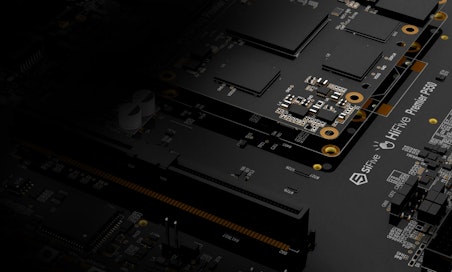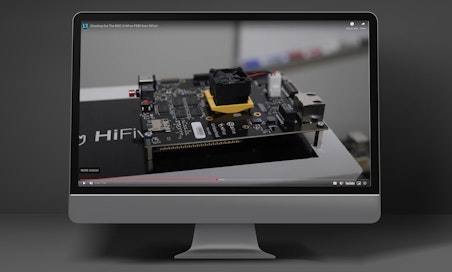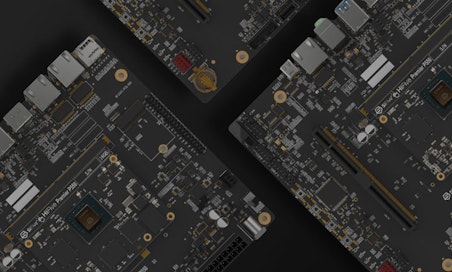SiFive 博客
来自 RISC-V 专家的最新洞察与深度技术解析

在智能加速器上构建 AI 的未来
使用 SiFive X100 系列作为加速器控制单元(ACU)
在之前的《本地 AI 的完美解决方案》文章中,我们介绍了 SiFive Intelligence X100 产品系列的部分高层设计理念,并展示了与其他成熟厂商的性能对比。我们还讨论了 AI 市场的快速创新,以及这如何使设计“完美”的硬件加速器变得极具挑战性。而从客户那里可以看到的是,他们希望在加速器之外配备一个可编程的前端,我们称之为加速器控制单元(ACU)。这使得客户能将更多精力(和研发支出)集中在加速器的数据处理能力上,而控制和管理功能则交由 SiFive 基于 RISC-V 的方法来实现。
本文将探讨如何高效地将 X100 系列处理器与硬件加速器耦合。下图展示客户如何使用 X 系列产品作为加速器控制单元(ACU)。

X160 和 X180 处理器中集成的向量引擎提供了互补的计算能力,也可以协助加速器完成多种任务,包括数据的前/后格式化处理,以及处理边界情况。基于完全兼容 RISC-V 指令集架构的产品,使客户能够从广泛且快速扩展的应用软件、操作系统和开发工具选项中进行选择。
利用 X100,可以为两种不同类型的 SiFive 专有直连核心加速器接口提供标准化的软件开发模式,从而降低延迟并提升整体性能。
-
SiFive 标量协处理器接口(SSCI): 这是第二代 Intelligence 的新特性。该接口允许通过 RISC-V 自定义指令直接访问 X100 处理器内的寄存器来驱动加速器。我们的客户正使用它来控制和配置 LGTM。
-
向量协处理器接口(VCIX): 这是一个高带宽接口,用于支持数据向矩阵协处理器的传输。使用 VCIX 可以实现对 CPU 向量寄存器的高带宽访问,降低延迟,并通过向量类指令格式向客户的矩阵引擎提供大规模数据集。这不仅适用于边缘/物联网应用,大型数据中心客户也正以这种方式使用 VCIX。
此外,还有核心本地端口(CLP),它允许 CPU 快速访问加速器的 SRAM,以便进行配套计算。
这在实践中是如何运作的呢?如果我们假设使用 SSCI 类型的接口,自定义功能可能包括执行三角函数、特定算法的位操作或数学函数(如平方根计算)。

自定义逻辑只需要解码操作码中的少数几位,并执行具体的实现运算。而 X100 中现有的 CPU 逻辑则负责完成指令的完整解码、选择源寄存器、从目标寄存器读写、执行数据转发,以及管理流水线暂停和刷新等功能。
您是否正为下一代平台的最佳系统架构而苦恼?是否正负责将 AI 引入物联网工作负载的任务?SiFive Intelligence 家族是专为 AI 设计的,已经成为越来越多应用的热门解决方案,也许它正是您的理想选择。SiFive 可以提供建模工具和免费的系统架构评估,帮助您降低风险并加速项目进展。
请查看以下应用案例,了解我们的客户如何使用这些新产品:美国一线半导体公司授权采用 SiFive X160,用于工业 MCU 应用。











